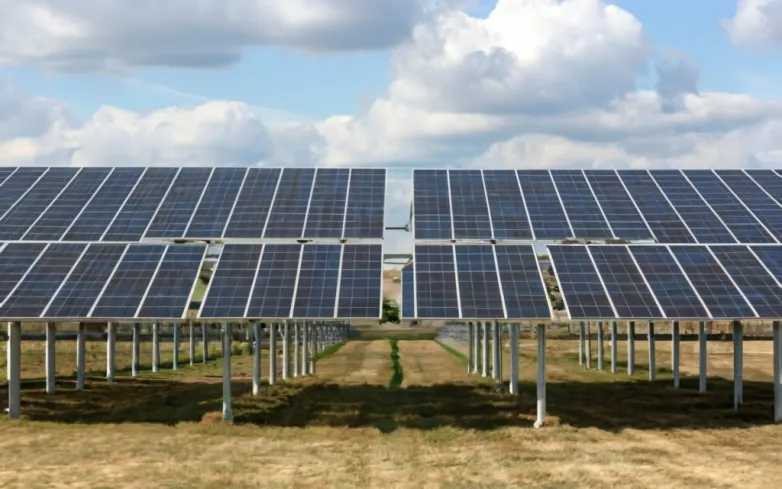Abraxas Starts 100MW Maldives Floating Solar Build
- Abraxas Power wins approval for a 100‑MW floating solar farm in the Maldives, slashing diesel reliance, cutting costs, and adding utility-scale renewables without using scarce land.

Canadian developer Abraxas Power Corp secured environmental approval for a 100‑MW floating solar project in the Maldives, clearing the way to move from planning to full-scale implementation. The clearance enables coastal works and land reclamation, the first major steps before deploying floating PV arrays as part of the country’s energy transition.
The project targets the island nation’s diesel-dependent grid and acute land scarcity by shifting solar generation offshore. Once operational, the installation is expected to cut fuel imports, lower generation costs, and diversify supply, advancing the Maldives’ climate goals and resilience while adding utility-scale renewable capacity without consuming valuable land.
How will coastal works and grid integration proceed for Maldives’ 100‑MW floating solar?
Site preparation and surveys
- High‑resolution bathymetric and geotechnical campaigns to map lagoon depths, sediment shear strength, and coral heads, informing anchor choice and cable routes
- Seasonal wave, current, and cyclone‑risk modeling to set design loads and construction windows
Coastal works methodology
- Turbidity control with curtains and silt screens; coral relocation and seagrass avoidance where feasible
- Limited shoreline interventions at cable landing points: micro‑trenching/Horizontal Directional Drilling to avoid beach erosion
- Selective, small‑footprint land reclamation only for onshore substation pads and O&M yards, using geotextile containment and staged compaction
Mooring and array deployment
- Use of modular FPV rafts on HDPE or aluminum floats with UV and salt‑spray resistance
- Hybrid mooring systems (helical/screw anchors in firm sands, gravity anchors on coral rubble) with elastic hawsers to ride monsoon swells
- Wave‑attenuation where needed via low‑crested rubble mounds or floating breakwaters outside sensitive habitats
- Phased build‑out in 10–20 MW blocks to de‑risk weather and allow early power export
Electrical collection offshore
- String inverters aggregated to floating MV hubs; 11–33 kV wet‑mate connectors and looped collection circuits for redundancy
- Floating DC/AC cabling in UV‑stable jackets, descending to subsea armored MV export cables at array perimeters
Export cable routing
- HDD landfalls to minimize reef disturbance; burial/rock‑dump protection through surf zones and marked corridors to avoid anchors and fishing gear
- Real‑time benthic monitoring during lay; post‑lay ROV survey and as‑built route charts shared with marine users
Onshore grid interface
- Compact GIS substations on reclaimed pads: step‑up to island standards (typically 11 or 33 kV), with N‑1 transformers and busbar redundancy
- Protection coordination updates (distance/REF, differential) and new relays with ROCOF/anti‑islanding aligned to national grid code
- Harmonic filtering and STATCOMs for voltage support and flicker control on weak feeders
System operations and controls
- Central SCADA/EMS with real‑time curtailment, hybrid controls to coordinate PV with diesel gensets, enabling lower spinning reserve
- Grid‑forming or grid‑supporting inverters to enhance frequency/voltage stability; fast‑ramp capability for cloud transients
- 20–40 MWh BESS distributed at key substations for smoothing, black‑start support, and evening peak shifting
Interconnection strategy across islands
- Prioritize tie‑ins to STELCO/FENAKA feeders with highest diesel costs; staged synchronization to multiple islanded microgrids
- Future‑proof ducts and beach manholes for additional circuits as capacity expands
Environmental and social safeguards
- Work sequenced outside coral spawning and monsoon peaks; vessel speed limits and exclusion zones for marine fauna
- Community engagement on fishing lanes and temporary navigation diversions; clear notice‑to‑mariners and aids to navigation around arrays
O&M and resilience
- Corrosion management (sacrificial anodes, marine‑grade alloys); biofouling control plans; cyclone‑ready mooring inspection regime
- Spare‑parts depots onshore; safe access via floating walkways and low‑wake service craft
Timeline and governance
- 6–9 months for detailed design, permits, and surveys; 12–18 months for phased coastal works and grid tie‑ins; progressive energization per block
- Close coordination with energy ministry, utility operators, port/marine authorities, and environmental agencies through a joint implementation cell
Also read

